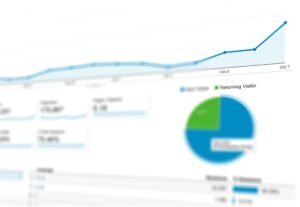Do you ever wonder why some brands always pop up on your feed while others fade into the background? Well, the secret’s out: it’s all about having a rock-solid social media advertising plan. Crafting an effective strategy is like baking a cake—forget a key ingredient, and it’ll flop. But don’t sweat it! We will get into the essential steps to create your plan, from setting clear advertising objectives to choosing the right platforms. Whether you’re looking to boost your brand or sales, let’s whip up a plan that works for you!
Setting Objectives On How to Create a Social Media Advertising Plan
Setting objectives for social media advertising is like plotting your course on a journey. Do you want to raise brand awareness, boost sales, attract leads, or build a lively community? These goals guide your path and keep you focused. Without clear objectives, it’s like wandering without a map. You’re moving, but not necessarily in the right direction.
SMART goals are powerful tools. They are Specific, Measurable, Achievable, Relevant, and Time-bound objectives. Instead of vaguely hoping for “more followers,” set a SMART goal like “Increase Instagram followers by 20% in three months.” This clarity provides direction and a timeline.
- Increase Instagram followers by 20% in 3 months
- Drive 500 website visits from Facebook ads in 6 weeks
- Generate 100 new leads through LinkedIn by year-end
- Boost Twitter engagement by 15% in 2 months
- Grow email sign-ups by 30% with a social media campaign in 4 months
Understanding and Analyzing Your Target Audience

Understanding your audience is key to effective marketing. By creating buyer personas that include demographics, interests, and challenges, you can tailor your efforts to meet their needs and boost ROI.
Tools like Google Analytics and Facebook Insights help segment audiences by behaviors and demographics, ensuring your campaigns reach the right people with maximum impact.
| Audience Segment | Characteristics |
|---|---|
| Young Professionals | Ages 25-35, tech-savvy, career-focused |
| New Parents | Ages 28-40, interested in baby products |
| Fitness Enthusiasts | Ages 18-45, active lifestyles, gym-goers |
Selecting the Right Social Media Platforms
Picking the right platform is like choosing the best stage for your show. You want to be where your audience hangs out. Check your audience’s demographics to decide. If they’re young, try TikTok. Looking to connect with professionals? Go for LinkedIn.
Each platform has strengths. Facebook builds communities, and Instagram excels in visual storytelling. Find where your audience is most active and where your content thrives.
Cross-platform promotion extends your reach. Share content across multiple platforms but tailor it to fit each one’s vibe. This expands your brand’s visibility and engagement, ensuring no potential follower slips through the cracks.
Crafting Compelling Content for Social Media Ads

Content makes social media advertising successful. Great ads tell a compelling story that resonates with audiences, sparking clicks, shares, and conversions. Engaging visuals, catchy phrases, and a brand-aligned voice are essential for crafting content that connects on a human level.
Incorporating the right keywords enhances visibility and ensures your content reaches the right audience. Tools like Google Keyword Planner can help you identify relevant terms to integrate naturally, keeping your messaging both impactful and authentic.
Content Formats and Ad Types:
- Images: Quick attention grabbers. Use high-quality photos that tell a story.
- Videos: Showcase products in action, and build emotional connections. Keep them brief.
- Carousel Ads: Display multiple products or features. Let users swipe for more.
Budgeting and Allocating Resources Effectively
Budgeting is like planning your strategy for a big game. Why is it important? It prevents overspending and maximizes return on investment. Without a budget, money might be wasted on ineffective ads. A good budget focuses on what’s working and eliminates ineffective spending.
Use tools like Google Adwords Keyword Planner to understand search trends and key investment areas. Media buying isn’t just about expensive spots; it’s about being strategic. Allocate resources where your audience is most engaged, maximizing efficiency.
| Resource | Allocation |
|---|
| Facebook Ads | 40% of the total budget for community engagement |
| Instagram Ads | 30% for visual storytelling |
| Google AdWords | 30% for keyword traffic |
Monitoring, Measuring, and Optimizing Campaign Performance

Wondering if your ad campaign is effective? Monitoring key performance indicators (KPIs) is vital. KPIs are the scorecards of your campaign. They assess goal achievement. Without them, it’s like playing without a scoreboard.
Use tools like Google Analytics and Facebook Insights for performance analysis. They reveal what’s working and what’s not. They track interactions, conversion rates, and customer journeys, offering insight into user behavior. These insights guide decisions and adjustments.
Optimization is about improvement. Identify ineffective elements and drop them. Focus on high performers. A/B testing reveals which ad version resonates most with audiences for ongoing refinement.
- Click-Through Rate (CTR): Frequency of ad clicks
- Conversion Rate: Users completing desired actions
- Return on Ad Spend (ROAS): Revenue per dollar spent
- Engagement Rate: User interaction with ads (likes, shares)
- Cost Per Click (CPC): Cost per ad click
Tools and Templates for Streamlining Your Social Media Advertising Plan
Using the right tools and templates simplifies creating a social media advertising plan. Why rely on guesswork? Templates provide a structured approach, ensuring no critical detail is missed (like forgetting your umbrella on a rainy day!). They organize your goals, budget, and strategy.
Analytics tools are like crystal balls. They offer insights into what’s working, what’s not, and where efforts should shift for optimal results. With these in hand, you’re working smart, not just hard.
- Hootsuite: For scheduling posts, tracking analytics
- Canva: To create stunning visuals easily
- Google Analytics: For detailed campaign insights
Conclusion
Jumping into creating a social media advertising plan begins with setting solid objectives. Remember those SMART goals we talked about? They keep your brand’s focus sharp and progress quantifiable.
Understanding who your audience is and choosing the right platforms go hand-in-hand. It’s like finding the perfect pair of shoes—when it’s right, everything clicks, right?
Don’t forget that compelling content is your not-so-secret weapon for engagement, while smart budgeting keeps you on track without breaking the bank.
By keeping a close eye on performance and utilizing handy tools and templates, optimizing your campaigns becomes second nature. So, go ahead and put these tips into action to rock your social media game!
FAQ
How do I create a social media advertising plan?
Start by setting clear goals that are specific and measurable. Know your audience, choose the right platforms, and craft engaging content. Use tools and templates for easy planning.
How do I plan a social media ad?
Identify your target audience and set a budget. Select platforms that fit your goals and audience. Develop compelling content and use metrics to track ad performance.
How to create a social media advertising plan template?
Outline your goals, audience, platforms, and content strategies. Include sections for budgeting and performance tracking to ensure a comprehensive plan.
Where can I find a social media strategy template?
Look online for free resources and templates. Websites offering marketing tools might have templates you can download and customize.
What’s the best social media platform for beginners?
Facebook is beginner-friendly and great for community building. It’s versatile and appeals to a broad audience, making it ideal for those just starting.




